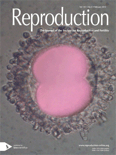
DEVELOPMENTAL DYNAMICS
Scope & Guideline
Illuminating the Pathways of Biological Development
Introduction
Aims and Scopes
- Molecular Mechanisms of Development:
The journal publishes research exploring the molecular signaling pathways, transcription factors, and genetic networks that orchestrate development in various organisms, including vertebrates and invertebrates. - Comparative Developmental Biology:
There is a strong emphasis on comparative studies that highlight the evolutionary aspects of development, examining how different species have adapted their developmental processes over time. - Regeneration and Repair Mechanisms:
Research focusing on the mechanisms of regeneration in model organisms, such as zebrafish and axolotls, is a core area of interest, providing insights into potential applications for regenerative medicine. - Developmental Pathologies:
The journal includes studies that investigate the developmental basis of congenital disorders and other pathologies, linking developmental biology with clinical implications. - Experimental Models:
Utilizing various experimental models, including zebrafish, mice, and amphibians, the journal encourages studies that leverage these systems to elucidate developmental processes and genetic functions.
Trending and Emerging
- Advancements in Regenerative Medicine:
Research on regenerative processes, especially in model organisms like zebrafish and axolotls, is gaining momentum, emphasizing the potential for therapeutic applications in regenerative medicine. - Integration of Genomic Technologies:
There is an increasing trend towards the application of genomic and transcriptomic technologies, such as single-cell sequencing, to unravel the complexities of development at unprecedented resolutions. - Focus on Developmental Disorders:
An emerging theme involves the exploration of genetic and environmental factors contributing to developmental disorders, linking basic research with clinical applications to address congenital anomalies. - Mechanobiology in Development:
Research exploring the role of mechanical forces in developmental processes is on the rise, reflecting a growing recognition of the importance of physical factors in shaping biological structures. - Interdisciplinary Approaches:
The integration of methodologies from various fields, including bioengineering and computational biology, is increasingly common, suggesting a trend towards more holistic and systems-based approaches in developmental research.
Declining or Waning
- Reduction in Focus on Invertebrate Models:
Although invertebrate models have historically been a staple in developmental biology, recent publications show a significant shift towards vertebrate models, particularly zebrafish and mice, indicating a waning interest in traditional invertebrate systems. - Diminishing Emphasis on Morphological Studies:
There appears to be a decline in studies solely focused on morphological descriptions of development, with a shift towards molecular and genetic analyses that provide deeper mechanistic insights. - Less Frequent Publications on Environmental Influences:
Research examining the impact of environmental factors on development, while still relevant, has seen a decrease, possibly due to a greater focus on genetic and molecular underpinnings of development.
Similar Journals

SEMINARS IN CELL & DEVELOPMENTAL BIOLOGY
Advancing the Frontiers of Cellular UnderstandingSEMINARS IN CELL & DEVELOPMENTAL BIOLOGY is a premier journal published by Academic Press Ltd - Elsevier Science Ltd, focusing on the vital domains of cell and developmental biology. With an impact factor that reflects its rigorous contributions to the field, this journal embodies the highest standards of academic excellence, currently ranking in the Q1 quartile for both Cell Biology and Developmental Biology categories as of 2023. Researchers and practitioners will appreciate its robust Scopus ranking, placing it within the top tiers of developmental biology and cell biology, with percentile ranks of 94th and 90th respectively, showcasing the journal's influential presence in the scientific community. The journal aims to disseminate comprehensive reviews, cutting-edge research articles, and significant advances in the understanding of cellular mechanisms and developmental processes, thereby catering to a diverse audience that includes researchers, scholars, and students dedicated to the life sciences. Given its commitment to open access, SEMINARS IN CELL & DEVELOPMENTAL BIOLOGY promotes widespread dissemination of knowledge, enhancing collaborative research efforts and driving innovation across biological disciplines.

Open Biology
Fueling scientific exploration with unrestricted access.Open Biology is a prestigious, interdisciplinary journal published by the Royal Society that has been paving the way in the fields of Biochemistry, Genetics and Molecular Biology, Immunology, and Neuroscience since its inception in 2011. Catering to a global audience of researchers, professionals, and students, Open Biology operates under an open access model, facilitating the unrestricted dissemination of high-quality research findings. With a current impact factor that positions its categories in the top quartile (Q1) and impressive Scopus rankings—evidencing its influence and reach—this journal serves as a vital platform for innovators and scientific inquiries aimed at advancing our understanding of life sciences. The journal's commitment to publishing cutting-edge research makes it an essential resource for those at the forefront of scientific exploration.

REPRODUCTION
Exploring the frontiers of reproductive science.REPRODUCTION, published by BIOSCIENTIFICA LTD, stands at the forefront of research in the fields of reproductive and developmental biology. With a focus on advancing our understanding of reproductive health and mechanisms, the journal has garnered an impressive reputation, consistently ranking in the first quartile for key categories including Embryology, Endocrinology, Obstetrics and Gynecology, and Reproductive Medicine in 2023. Notably, it holds an esteemed position in the Scopus rankings, with high percentiles that reflect its significant impact in the scientific community. The journal is committed to open access, promoting the broad dissemination of high-quality research to facilitate innovative discoveries and interdisciplinary collaboration. Situated in the United Kingdom, REPRODUCTION serves as a vital resource for researchers, professionals, and students eager to contribute to the evolving landscape of reproductive sciences and related fields.

Russian Journal of Developmental Biology
Connecting past insights with future breakthroughs.The Russian Journal of Developmental Biology, published by PLEIADES PUBLISHING INC, serves as a significant platform for researchers and professionals engaged in the field of developmental biology. With the ISSN 1062-3604 and E-ISSN 1608-3326, this journal focused on intricate biological processes and dynamic developmental mechanisms from 2005 until 2017. Although its coverage is currently discontinued in Scopus, it remains notable for its contribution to understanding the pivotal roles of biochemistry and molecular genetics within the context of development. As a publication situated in the competitive quartiles of the field and boasting an influential Scopus rank of #77 out of #78, it has made a unique mark in developmental studies. Researchers and academics seeking to enhance their knowledge of historical advancements in the discipline will find the journal a valuable resource, even as it navigates the transition away from active publication.

DEVELOPMENT GROWTH & DIFFERENTIATION
Exploring the Mechanisms of Life’s ComplexitiesDEVELOPMENT GROWTH & DIFFERENTIATION, published by Wiley, stands as a vital journal in the realms of Cell Biology, Developmental Biology, and Medicine. With an ISSN of 0012-1592 and E-ISSN of 1440-169X, this esteemed journal has been a key player in the scientific community since its inception in 1969, continuing to contribute significantly to the understanding of developmental processes and mechanisms underlying growth and differentiation. Ranked Q3 in Cell Biology and Developmental Biology, and Q2 in miscellaneous aspects of Medicine as of 2023, the journal provides a platform for high-quality research articles, reviews, and critical insights that foster academic discourse in these vital fields. Although currently not available as open access, the journal ensures the availability of essential research to its global readership, facilitating collaboration and innovation. Researchers, professionals, and students alike will find DEVELOPMENT GROWTH & DIFFERENTIATION to be an invaluable resource for advancing knowledge and driving forward the scientific inquiry into the intricacies of biological development.

Reproductive Biology
Bridging Disciplines for a Deeper Understanding of ReproductionReproductive Biology is a premier academic journal published by Elsevier, dedicated to advancing the field of reproductive science. With an ISSN of 1642-431X and an E-ISSN of 2300-732X, this journal has been serving the scientific community since its inception in 2001. It notably holds a Q1 ranking in Animal Science and Zoology as of 2023, underscoring its significant impact and prominence in this domain. The journal encompasses a wide array of topics surrounding reproductive biology, including but not limited to endocrinology and developmental processes, making it an essential resource for researchers and practitioners. Although it operates under a traditional access model, its comprehensive scope offers valuable insights that contribute to advancements in reproductive health, animal conservation, and biotechnology. Published in the Netherlands, Reproductive Biology aims to foster interdisciplinary collaboration and innovation, ultimately enriching our understanding of reproductive mechanisms across various species. Researchers, professionals, and students alike will find this journal an indispensable platform for disseminating groundbreaking research and engaging with the latest findings in reproductive science.

Annual Review of Cell and Developmental Biology
Unveiling Insights in Cell and Developmental ResearchThe Annual Review of Cell and Developmental Biology, published by Annual Reviews, stands as a premier journal in the fields of cell biology and developmental biology. Established in 1995, this influential journal has continuously provided comprehensive and critical reviews that synthesize the latest findings in these vibrant research areas, catering to the interests of researchers, professionals, and students alike. With an impressive impact factor, the journal ranks in the top quartile (Q1) for both Cell Biology and Developmental Biology, boasting remarkable Scopus rankings—#1 in Developmental Biology and #22 in Cell Biology. This emphasizes its significance and authority within the academic community. Although the journal does not operate under an open-access model, it remains a crucial resource for those seeking to stay at the forefront of scientific discoveries and theoretical advancements. The Annual Review of Cell and Developmental Biology continues to solidify its status as an essential platform for sharing knowledge and stimulating scientific inquiry.

MOLECULAR HUMAN REPRODUCTION
Innovating Understanding in Human Reproductive ScienceMOLECULAR HUMAN REPRODUCTION, published by Oxford University Press, is a pivotal journal dedicated to advancing the field of reproductive biology. Since its inception in 1995, the journal has been recognized for its rigorous peer-reviewed research and substantial contributions to the understanding of molecular mechanisms underlying human reproduction. With an impressive impact factor and ranked within the top tiers (Q1 and Q2) across diverse categories including Embryology, Obstetrics and Gynecology, and Reproductive Medicine, it stands as an essential resource for researchers, healthcare professionals, and students alike. The journal aims to publish cutting-edge research that explores the complexities of human reproduction at the molecular and cellular levels, fostering a deeper understanding that can be translated into clinical practice. Although it currently operates under a subscription model, the valuable insights and groundbreaking findings featured within its pages continue to influence the trajectory of reproductive health research globally. Located in the heart of Oxford, United Kingdom, the journal remains committed to addressing vital challenges in the field and promoting innovative scientific dialogue.

INTERNATIONAL JOURNAL OF DEVELOPMENTAL BIOLOGY
Advancing the Frontiers of Developmental BiologyThe International Journal of Developmental Biology, published by the University of Basque Country UPV-EHU Press, has been a pivotal resource in the field of developmental biology since its inception in 1989. With an ISSN of 0214-6282 and an E-ISSN of 1696-3547, this journal serves as a platform for groundbreaking research and exploration within the realms of embryology and developmental biology. Although currently classified in the Q4 category for Developmental Biology and Q3 in Embryology as of 2023, the journal continues to provide vital insights that influence contemporary scientific understanding and practices. It ranks 14th out of 21 in the field of Embryology and holds a 35th percentile ranking in this specialized domain, emphasizing its emerging relevance in the academic community. Researchers, professionals, and students alike are encouraged to utilize the journal’s content to enrich their knowledge and drive innovation within developmental sciences. With an eye towards future developments, the journal anticipates continued evolution through the years, maintaining its commitment to high-quality, impactful research.

DEVELOPMENTAL BIOLOGY
Charting New Territories in Developmental StudiesDEVELOPMENTAL BIOLOGY, published by Academic Press Inc., Elsevier Science, stands as a pivotal journal in the fields of cell biology, developmental biology, and molecular biology since its inception in 1959. Renowned for its rigorous peer-review process, this journal serves as a platform for publishing cutting-edge research, reviews, and insights that drive forward our understanding of developmental processes at the cellular and molecular levels. With an impressive track record, it is classified in the Q2 quartile across multiple categories, reflecting its significant impact and relevance in academia and research communities. Although the journal does not provide Open Access options, it remains accessible via numerous academic databases, ensuring a wide reach for researchers, professionals, and students alike. With a commitment to advancing the field, DEVELOPMENTAL BIOLOGY continues to be essential reading for those looking to stay at the forefront of developmental research and its applications.